
Power On Demand: Mastering Home Energy Independence
Foreword
As an industry expert with over two decades of experience in home energy solutions, it gives me great pleasure to introduce an essential resource that addresses one of the most pressing needs of modern homeowners: reliable and sustainable backup power sources.
The world of home energy is rapidly evolving. Not long ago, the idea of a homeowner managing their own comprehensive, sophisticated backup power system seemed futuristic. Today, it is not only possible but becoming increasingly necessary. As extreme weather events become more frequent and the whole power grid shows signs of strain, the ability to maintain an independent and reliable source of power is more than a convenience—it is a vital component of home safety and security.
"Power On Demand: Mastering Home Energy Independence" arrives at a crucial time. Compiled with the expertise of seasoned professionals, this guide demystifies the complexities of home power solutions. From selecting the right type of generator to integrating cutting-edge renewable technologies, it provides you with the knowledge and tools to ensure your home remains a sanctuary against the uncertainties of the outside world.
The importance of this guide cannot be overstated. Each chapter is carefully crafted to walk you through various aspects of home power planning and management, highlighting many factors and key considerations and offering expert advice every step of the way. Whether you are a new homeowner embarking on your first journey into home energy solutions or a seasoned property owner looking to upgrade your system, the insights within these pages will prove invaluable.
Moreover, this guide does not just stop at conventional wisdom. It pushes the boundaries by embracing new technologies and sustainable practices that not only enhance your home's energy efficiency but also its impact on the environment. This holistic approach ensures that you are prepared for the future, whatever it may hold.
As you turn these pages, I encourage you to think of your journey toward energy independence not just as a series of technical decisions, but as a meaningful step towards a more secure and sustainable lifestyle. The decisions you make today will shape not only your own comfort and security but also the legacy you leave for the environment and future generations.
Thank you for choosing this guide as your companion on this important journey. Let’s empower your living, together.
Table of Contents
Introduction
-
Welcome to Your Empowered Home
-
Why You Need a Reliable Power Solution
Chapter 1: Understanding Your Power Needs
-
Assessing Your Home's Energy Consumption
-
Calculating Your Power Requirements
-
Introduction to Portable Power Solutions
Chapter 2: Types of Home Generators
-
Standby Generators: The Ultimate Home Power Solution
-
Dual Fuel Generators: Flexibility and Efficiency
-
Portable Generators: Versatility on the Go
-
Spotlight on Key Brands: Cummins and Briggs and Stratton
Chapter 3: Installation and Maintenance
-
Installation Best Practices for Home Generators
-
Routine Maintenance to Ensure Longevity
-
Troubleshooting Common Generator Issues
Chapter 4: Alternative Power Solutions
-
Solar Power Systems: Harnessing the Sun
-
Wind Energy: A Forgotten Ally
-
Battery Storage Systems: Banking Your Power
-
Emerging Technologies in Home Energy
Chapter 5: Preparing for Specific Weather Threats
-
Hurricane and Tropical Storm Preparedness
-
Tornado and Severe Storm Strategies
-
Winter Weather Warfare
-
Flood Management and Mitigation
Chapter 6: Budgeting for Your Home Power Solution
-
Understanding Costs and Financial Planning
-
Exploring Financing Options and Incentives
-
Calculating Return on Investment
-
Budgeting Tips for Homeowners
Chapter 7: Advanced Tips and Tricks
-
Smart Home Integration for Energy Management
-
Latest Technological Advancements
-
Eco-Friendly Practices for Sustainable Living
-
Preparing for the Future: Adapting to New Technologies
Conclusion: Powering Your Home, Empowering Your Life
-
Key Takeaways
-
Moving Forward
-
Stay Empowered
-
Thank You
Introduction:
Welcome to Your Empowered Home
In today’s world, where unpredictability is the only certainty, ensuring that your home remains a sanctuary is paramount. Power outages are no longer mere inconveniences; they can disrupt your daily life and pose serious risks to safety and comfort. This eBook, "Power On Demand: Mastering Home Energy Independence," is your essential guide to understanding and implementing robust home power solutions.
From sudden blackouts due to natural disasters to planned outages that test your patience, the need for an emergency plan and a reliable power backup has never been more critical. Whether you're a new homeowner considering your first generator purchase, or a seasoned property owner looking to upgrade your emergency power system, this guide will walk you through everything you need to know to make informed decisions about emergency power solutions.
With insights into the latest technologies from leading brands like Cummins, Briggs and Stratton, Bluetti, and Ecoflow, this comprehensive guide is not just about choosing the right generator; it’s about ensuring peace of mind in an era of uncertainty. Learn how to assess your power needs accurately, understand the nuances of different generator types, and discover innovative solutions that keep your home powered, no matter what the world throws your way.
Join us on a journey to energy independence, where readiness meets reliability, and discover how to keep your home lit, your appliances running, and your life uninterrupted, with the ultimate power solutions tailored just for you.
Chapter 1: Understanding Your Power Needs
Introduction
Every home's power needs are unique, shaped by various factors such as household size, essential appliances, and lifestyle preferences. This chapter will guide you through assessing your power requirements and introduce you to innovative solutions that ensure your home remains powered during outages.

Assessing Your Home's Power Requirements
To begin, it's crucial to understand your home's energy consumption during normal conditions and emergencies. Start by listing all essential appliances and systems you need to keep running during a prolonged power outage first, such as refrigerators, heating systems, lighting, and medical devices. Here's how you can calculate the total power required:
-
List Essential Appliances: Identify which appliances are critical for your daily needs.
-
Check Wattage Requirements: Look at the manufacturer's plate on each appliance to find the power usage in watts.
-
Sum Up Total Wattage: Add up the wattage of all essential appliances to determine the minimum power your backup solution needs to provide.
Choosing the Right Power Solution
With your power needs in hand, you can explore various solutions tailored to different scales and requirements:
-
Portable Power Stations: For smaller homes or those needing to power fewer devices, portable power stations by brands like Bluetti, Ecoflow, and Mango Power E offer a convenient and eco-friendly solution. These units are perfect for handling moderate loads such as charging phones, powering laptops, and keeping essential lights on.
-
Portable Generators: If you require more robust solutions that can handle larger appliances or multiple devices simultaneously, consider portable generators. These are suitable for running higher-wattage appliances, and companies like Anker provide durable options that can meet a broad range of needs.
Understanding Portable Solutions
Portable power solutions like those offered by Bluetti and Ecoflow are designed with the modern homeowner in mind. They are equipped with the latest technology to provide reliable, clean energy:
-
Product Highlight: Bluetti AC200P: The Bluetti AC200P is a solar-compatible power station that can keep your essential devices running for hours. It's perfect for handling the demands of a small to medium-sized home during a short outage.
-
Product Highlight: Ecoflow Delta 2 Max: The Ecoflow Delta offers a quick charge feature and multiple outlets, making it ideal for more demanding power needs that require flexibility and high efficiency.
Integrating Power Solutions Into Your Home
Once you've chosen the appropriate power solution, integrating it into your home setup is the next step. Ensure that:
-
Installation: Follow manufacturer guidelines for safe installation, particularly for more extensive systems.
-
Safety Protocols: Always prioritize safety by placing portable units in well-ventilated areas and using them according to the operational manual.
Conclusion
Understanding your home's electrical power needs is the first step toward ensuring you're prepared for any situation. Whether it's a brief power outage or an extended loss of electricity, having the right power solution in place is crucial for maintaining safety and comfort.
Chapter 2: Types of Home Generators
Introduction to Generator Options
Choosing the right generator for your home is about more than just power; it's about ensuring reliability, efficiency, and suitability for your specific needs. In this chapter, we'll explore the different types of generators available on the market, focusing on standby generators, dual fuel generators, and portable generators, with special attention on trusted brands like Cummins and Briggs and Stratton.

1. Standby Generators
What is a Standby Generator?
Standby generators are permanently installed outside your home and automatically kick in when the power goes out. They are ideal for long-term, high-capacity battery backup and power needs, capable of powering your entire home for multiple days.
Features of Standby Generators
-
Automatic operation: They start automatically within seconds of a power outage.
-
Fuel efficiency: Typically runs on natural gas or propane.
-
Power output: Can handle high loads, suitable for powering whole homes or large appliances continuously.
Spotlight on Cummins Standby Generators
Cummins is renowned for its reliable and powerful standby generators. A model like the Cummins QuietConnect series offers a range of power outputs suitable for residential use, all while operating with minimal noise—a crucial feature for residential areas.
2. Dual Fuel Generators
What is a Dual Fuel Generator?
Dual fuel generators offer flexibility in fuel sources, operating on gasoline or propane, which can be a significant advantage during extended power outages where fuel availability might vary.
Features of Dual Fuel Generators
-
Versatility in fuel choice: Ability to switch between gasoline and propane, which can be crucial during supply shortages.
-
Efficient operation: Often features economy modes to reduce fuel consumption when full power isn't necessary.
-
Adaptability: Ideal for areas where fuel availability can fluctuate due to seasonal or market impacts.
Highlighting Pulsar
Pulsar’s dual fuel generators are known for their durability and ease of use. Their Pulsar PGD95BiSCO Dual Fuel Generator, for example, can seamlessly switch between fuels with the flip of a switch, ensuring you always have power when you need it whether you are using gasoline or propane to power your generator.
3. Portable Generators
What is a Portable Generator?
Portable generators are a versatile and economical option for many homeowners. They can be moved as needed and are ideal for both emergency power at home and for use in remote locations like camping or tailgating.
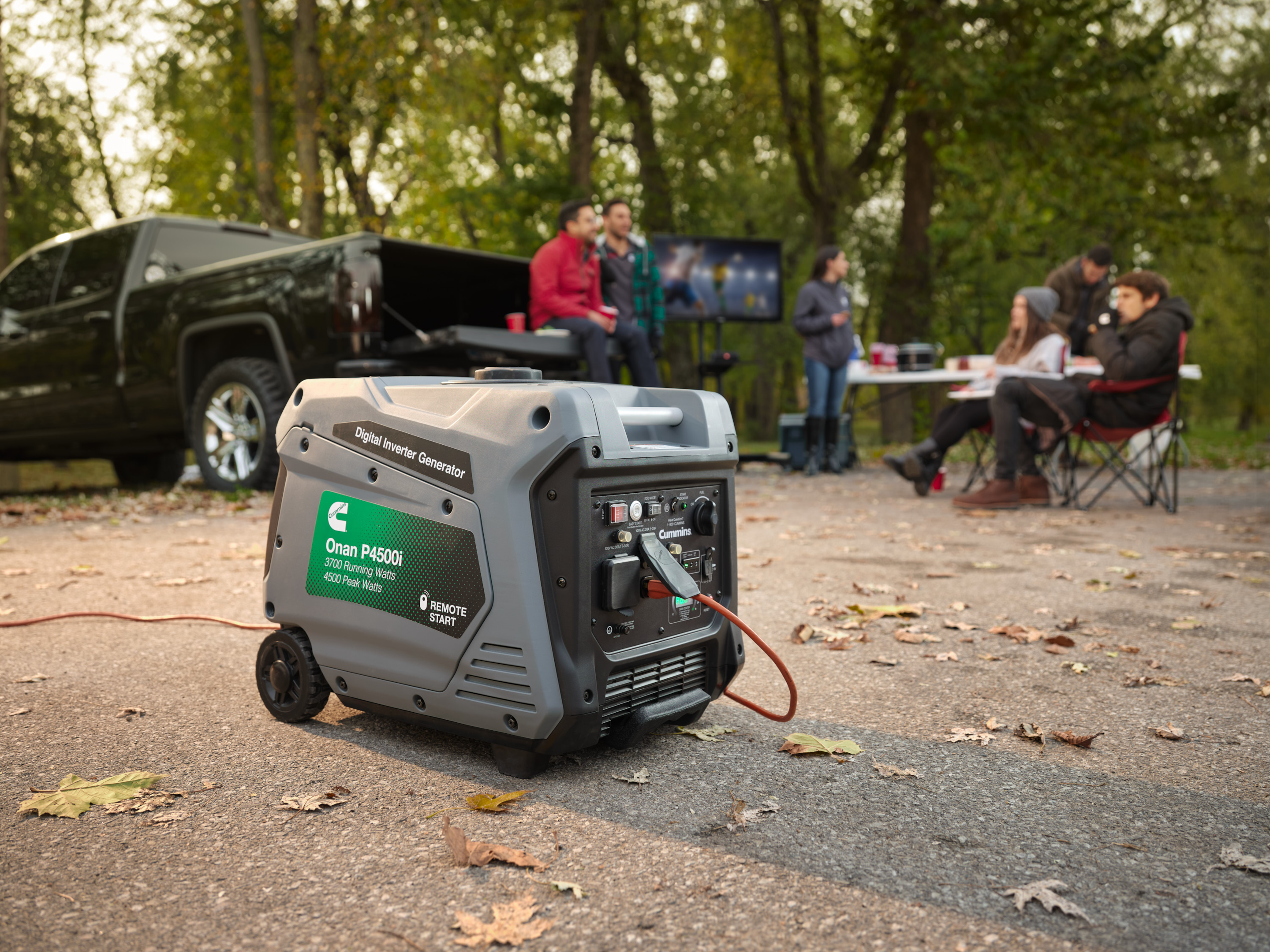
Features of Portable Generators
-
Portability: Easy to move and set up where needed.
-
Fuel options: Typically gasoline, but some newer models also use diesel or propane.
-
Power range: Suitable for powering essential appliances to entire rooms.
Brands to Consider
While focusing on brands like Anker and Ecoflow for smaller, more mobile power solutions can be beneficial, traditional portable generators from Briggs and Stratton offer robust options that can cover more extensive needs without the full investment of a standby solar generator unit.
Conclusion: Choosing the Right Generator for Your Home
Understanding the types of generators available and their unique features helps you make an informed decision tailored to your home’s needs. Whether you opt for the robustness of a Briggs & Stratton standby generator, the flexibility of a Cummins dual fuel unit, or the convenience of a portable model, the right choice depends on your specific energy requirements, budget, and the typical challenges you face in your region.
Chapter 3: Installation and Maintenance of Home Generators
Introduction to Installation and Maintenance
Proper installation and regular maintenance are crucial for the performance and safety of your home generator. This chapter outlines the best practices for installing different types of generators and the essential maintenance routines to keep them operating at peak efficiency.
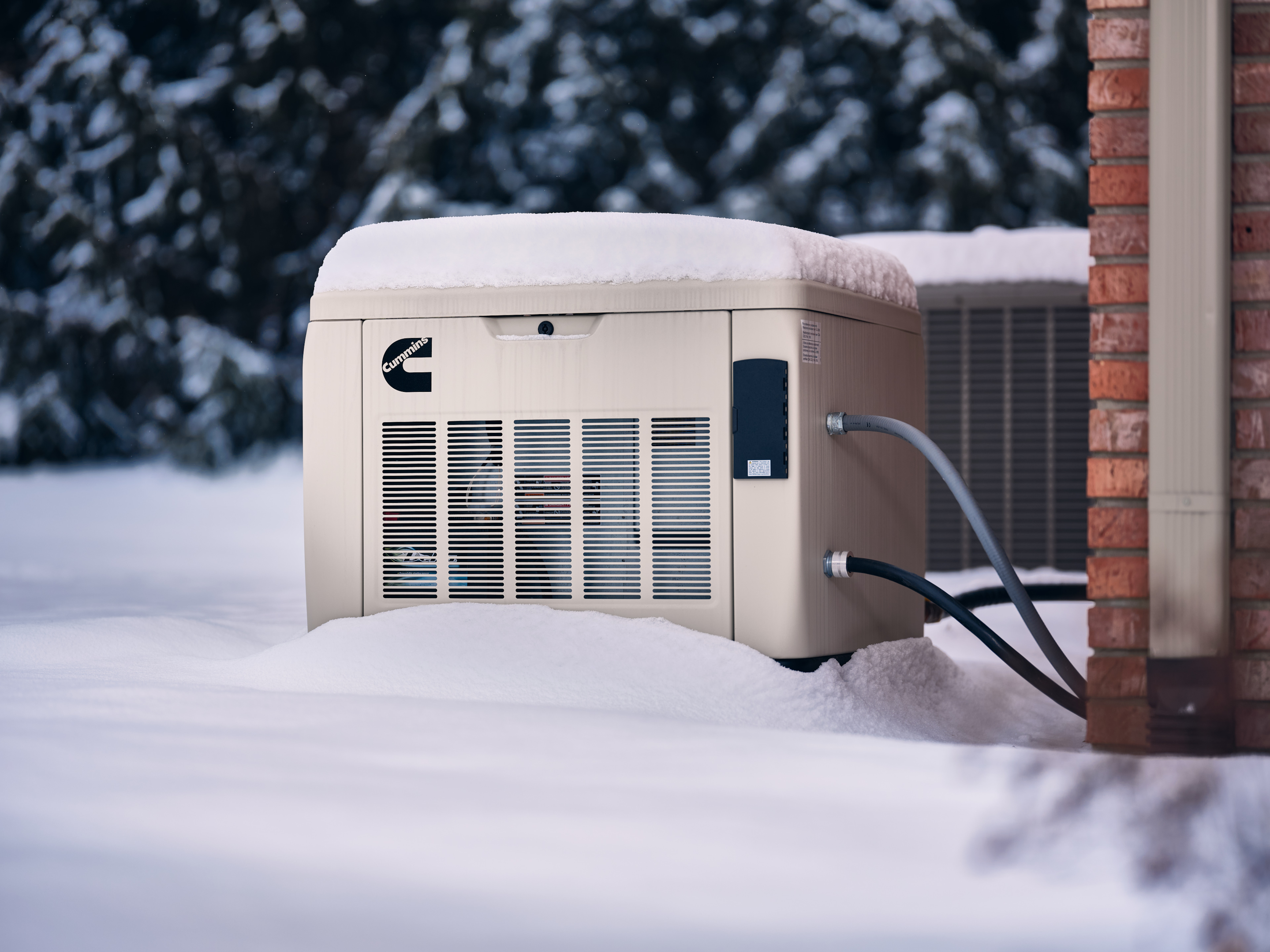
1. Installation Guidelines
Choosing the Right Location
-
Safety First: Install generators away from windows, doors, and vents to prevent exhaust fumes from entering the home.
-
Accessibility: Ensure the generator is easily accessible for maintenance and refueling.
-
Protection from Elements: Place in an area protected from direct exposure to harsh weather conditions.
Professional Installation
-
Why Use Professionals?: Installing standby generators involves electrical and gas plumbing skills that require professional handling to ensure safety and compliance with local codes.
-
Selecting a Contractor: Choose licensed professionals with experience in generator installation. Ensure they are familiar with brands like Cummins and Briggs and Stratton for best results.
Utility Connections and Compliance
-
Electrical Setup: Must be connected to your home’s power system through an approved automatic transfer switch.
-
Fuel Connections: For generators using natural gas or propane, professional connection to your home's fuel supply is essential.
-
Permits and Codes: Comply with local building codes and obtain necessary permits before installation.
2. Essential Maintenance Practices
Routine Checks
-
Weekly to Monthly: Run the generator briefly to ensure it's ready for use. Check oil levels, coolant levels, and battery status.
-
Fuel System: Regularly inspect fuel lines and connections for leaks or damage, particularly in dual fuel generators.
Scheduled Maintenance
-
Oil and Filter Changes: Perform according to the manufacturer's recommendations, typically after every 100 hours of use, or at least annually.
-
Air Filter Replacement: Check and replace air filters to keep the engine running smoothly and efficiently.
Seasonal Preparations
-
Winter Care: Ensure your generator is equipped with a cold weather kit if you live in a cold climate. This may include battery warmers and oil heaters to guarantee startup in freezing temperatures.
-
Summer Readiness: Check cooling systems and perform a thorough cleaning to prevent overheating during heavy summer use.
Long-Term Storage
-
If Not in Use: Store your portable generator properly when not in use. Drain the fuel or use a fuel stabilizer, disconnect batteries, and cover the unit to protect it from dust and moisture.
3. Troubleshooting Common Issues
Identifying Common Problems
-
Failure to Start: Check battery, fuel levels, and ensure the generator is not in fault mode.
-
Low Power Output: Inspect air and fuel filters; restricted airflow or fuel flow can reduce efficiency.
Professional Support
-
When to Call a Technician: For issues beyond basic maintenance, such as electrical faults or when dealing with warranty-covered repairs, always rely on qualified professionals.
Conclusion: Ensuring Generator Reliability Through Proper Care
Maintaining your generator isn’t just about keeping it running; it’s about ensuring your family’s comfort and safety during power surges and outages. Regular maintenance and proper installation are the keys to dependable generator performance. Whether you choose a sophisticated standby unit from Cummins or a versatile dual fuel generator from Briggs and Stratton, following the guidelines provided in this chapter will help you maximize the lifespan and efficiency of your investment.
Chapter 4: Alternative Power Solutions
Introduction to Renewable Energy Options
As homeowners increasingly seek sustainable and efficient energy solutions, alternative power sources such as solar panels, wind turbines, and hybrid systems have become more accessible. This chapter explores how these technologies can complement your existing generator setup, offering environmental benefits and potential cost savings over time.

1. Solar Power Solutions
Understanding Solar Kits
-
Components of a Solar Kit: Panels, inverters, batteries, and charge controllers.
-
Benefits: Eco-friendly, reduces electricity bills, and provides quiet operation.
-
Suitability: Best for regions with ample sunlight, ideal for reducing reliance on traditional power sources.
Integrating Solar Power with Generators
-
Hybrid Systems: Combine solar kits with generators for a versatile power solution. Use solar power during the day and switch to generators during low sunlight or high demand.
-
Energy Management: Smart systems can automatically switch between solar power and generators based on energy needs and availability, optimizing efficiency and fuel usage.
2. Wind Energy Solutions
Introduction to Residential Wind Turbines
-
How They Work: Convert wind energy into electricity using a turbine installed on a tower.
-
Application: Suitable for rural areas with consistent wind speeds.
-
Combination with Other Systems: Like solar, wind energy can be integrated with generators to ensure power availability during calm periods.
3. Battery Storage Systems
Benefits of Battery Storage
-
Energy Independence: Store excess energy generated by solar or wind systems to use during outages or peak demand times.
-
Enhanced Reliability: Provides a seamless power supply when transitioning between power sources.
Choosing the Right Battery System
-
Capacity and Scalability: Match the storage capacity to your energy production and home’s power needs.
-
Type of Batteries: Lithium-ion vs. lead-acid; consider lifespan, efficiency, and maintenance needs.
4. Emerging Technologies
Innovations in Home Energy
-
Smart Energy Systems: IoT-enabled systems that optimize energy use and monitor system health in real time.
-
Portable Power Stations: Highlighting portable and renewable options like those from Bluetti and Ecoflow, which offer advanced technology for managing power needs with minimal environmental impact.
Considerations for Going Green
-
Initial Investment vs. Long-Term Savings: Calculate the break-even point and long-term savings associated with investing in renewable technologies.
-
Government Incentives: Research local incentives such as rebates and tax credits that can reduce the upfront costs of renewable energy installations.
Conclusion: Building a Sustainable and Reliable Home Energy System
Adopting alternative power solutions not only contributes to a more sustainable planet but also enhances your home's energy security. By integrating renewable technologies with traditional backup generators, you create a robust, flexible power system ready to handle whatever comes your way. Whether it's reducing your carbon footprint, cutting energy costs, or ensuring uninterrupted power supply, the technologies discussed in this chapter can help you achieve a more resilient and environmentally friendly home.
Chapter 5: Preparing for Specific Weather Threats
Introduction to Weather Preparedness
Extreme weather events are becoming more frequent and severe due to climate change, making it crucial for homeowners to be well-prepared. This chapter will guide you through the best practices for using home power solutions during different severe weather threats, including hurricanes, tornadoes, winter storms, and floods.
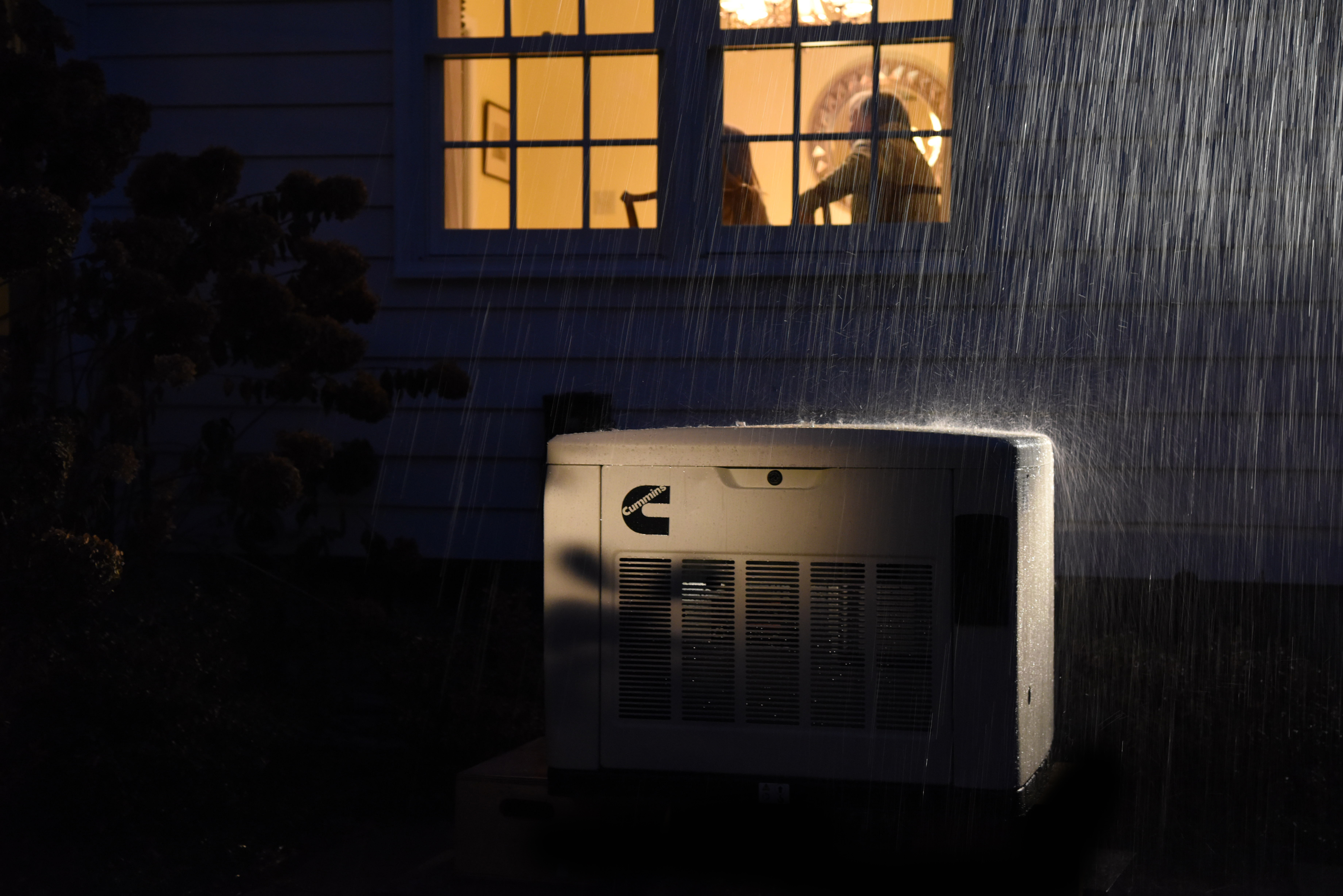
1. Preparing for Hurricanes and Tropical Storms
Understanding the Risks
-
High winds, heavy rain, and extended power outages are common during these storms.
-
Essential for coastal areas and any region prone to these conditions.
Recommended Power Solutions
-
Standby Generators: Units from Cummins and Briggs and Stratton provide reliable, automatic power during outages.
-
Waterproofing Considerations: Ensure that generator installations are elevated or protected to prevent water damage.
Safety and Maintenance Tips
-
Regularly test and maintain your generator before the hurricane season starts.
-
Store extra fuel in a safe, accessible place if using gasoline or diesel generators.
2. Tackling Tornadoes and Severe Storms
Rapid Response Requirements
-
Tornadoes can strike with little warning, requiring systems that can activate immediately.
Power System Recommendations
-
Dual Fuel Generators: Offers flexibility in fuel use, which is crucial when supply lines are disrupted.
-
Portable Generators: Quick to deploy and can be moved to safe locations as needed.
Safety Measures
-
Anchor generators securely to avoid displacement by strong winds.
-
Keep a weather radio and emergency kit ready to stay informed and prepared.
3. Handling Winter Storms and Cold Snaps
Challenges of Cold Weather
-
Power lines can be downed by ice and snow, leading to long-term outages.
-
Heating systems become critical for survival.
Optimal Power Choices
-
Standby Generators with Cold Weather Kits: Include battery warmers and oil heaters to ensure functionality in freezing temperatures.
-
Solar Panels: Can still function in winter, but require regular clearing of snow.
Preparation and Maintenance
-
Insulate generator units to maintain efficiency.
-
Regularly check and replace antifreeze in systems that require it.
4. Dealing with Floods and Heavy Rainfall
Flood-Specific Concerns
-
Electrical systems are particularly vulnerable to water damage.
Strategic Power Solutions
-
Elevated Installations: Ensure generators and solar arrays are installed above potential flood levels.
-
Battery Backups: Use high-capacity battery systems to provide power when generators are at risk of flooding.
Preventive Actions
-
Waterproof critical components and use sandbags to protect installations.
-
Plan for an evacuation route that includes taking portable power solutions with you if necessary.
Conclusion: Customizing Your Emergency Power Plan
Each type of severe weather presents unique challenges that require thoughtful preparation and the right choice of equipment. By understanding the specific needs of your geographic area and tailoring your power solutions accordingly, you can ensure that your home remains safe and functional, no matter the weather conditions. Preparing ahead of time is not just about installing the right equipment—it’s about peace of mind for you and your family members during unpredictable events.
Chapter 6: Budgeting for Your Home Power Solution
Introduction to Financial Planning for Power Solutions
Investing in a reliable power solution is a significant financial decision. Understanding the costs and potential savings involved can help you plan effectively and ensure you choose a system that meets your needs without straining your budget. This chapter provides a breakdown of the expenses and financial strategies associated with different types of home power solutions.
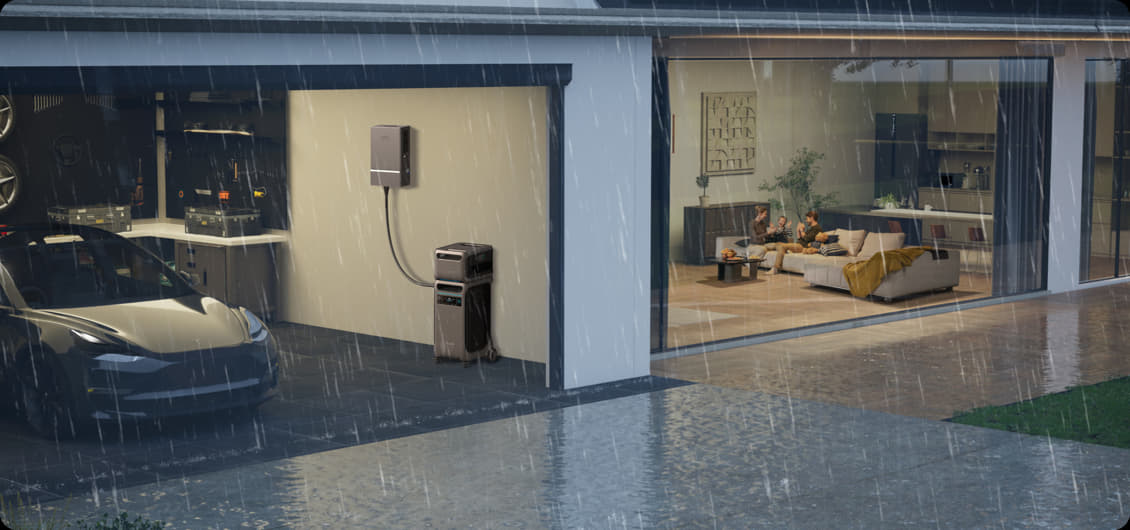
1. Understanding the Costs
Initial Purchase Price
-
Standby Generators: Typically the most expensive option due to their high power output and automatic functionality. Brands like Cummins and Briggs and Stratton offer models that vary in price depending on capacity and features.
-
Portable and Dual Fuel Generators: Generally less expensive than standby units but vary widely based on power capacity and fuel type.
-
Solar Kits and Battery Systems: Costs can vary significantly based on the size of the system and the quality of components. Initial outlay is higher, but potential savings on energy bills can offset this over time.
Installation Costs
-
Professional Installation: Necessary for standby generators and can be a substantial part of the total cost. Includes electrical and possibly gas fitting, depending on the type of generator.
-
DIY Installation: Possible with some portable generators and smaller solar setups, reducing upfront costs.
Operating and Maintenance Costs
-
Fuel Costs: Ongoing expense for generators that use gasoline, diesel, or propane. Solar systems require no fuel, reducing long-term operational costs.
-
Maintenance: Regular maintenance is crucial for generator longevity and efficiency, including oil changes, filter replacements, and professional inspections.
2. Financing and Incentives
Financing Options
-
Loans and Payment Plans: Many retailers and manufacturers offer financing plans to spread out the cost of a generator over several months or years.
-
Leasing Programs: Some companies offer leasing options for generators, reducing upfront costs in exchange for a fixed monthly fee.
Government Incentives and Rebates
-
Federal and State Tax Credits: Available for renewable energy installations like solar power systems.
-
Rebates: Some local governments and utility companies offer rebates for purchasing energy-efficient appliances.
3. Calculating Return on Investment
Long-Term Savings
-
Energy Bill Reductions: Particularly with solar and battery systems, where the cost of grid electricity can be offset by producing your own power.
-
Increased Home Value: Installing a standby generator can increase your home's market value, making it a worthwhile investment.
Cost-Benefit Analysis
-
Evaluating Total Cost of Ownership: Compare the initial and ongoing costs against the expected lifespan and benefits of each type of power solution.
-
Scenario Planning: Consider different outage scenarios and calculate potential losses without power versus the cost of maintaining a generator.
4. Budgeting Tips
Creating a Budget Plan
-
Assess Your Power Needs: Determine the minimum power requirements to decide on the most cost-effective system.
-
Prioritize Investments: Focus on essential features over luxury additions to control costs.
Conclusion: Making Smart Financial Choices
Selecting the right home power solution involves balancing cost, functionality, and future savings. By carefully considering your immediate budget and long-term financial goals, you can invest in a system that not only keeps your lights on during a power outage but also contributes positively to your household's overall financial health. This chapter has equipped you with the knowledge to make an informed decision that aligns with your financial circumstances and energy needs.
Chapter 7: Advanced Tips and Tricks
Introduction to Enhancing Your Home Power System
As technology evolves, so do the opportunities to enhance the efficiency, convenience, and sustainability of your home power solutions. This chapter explores advanced strategies for optimizing your setup, ensuring you remain ahead of the curve and maximize the benefits of your investment.
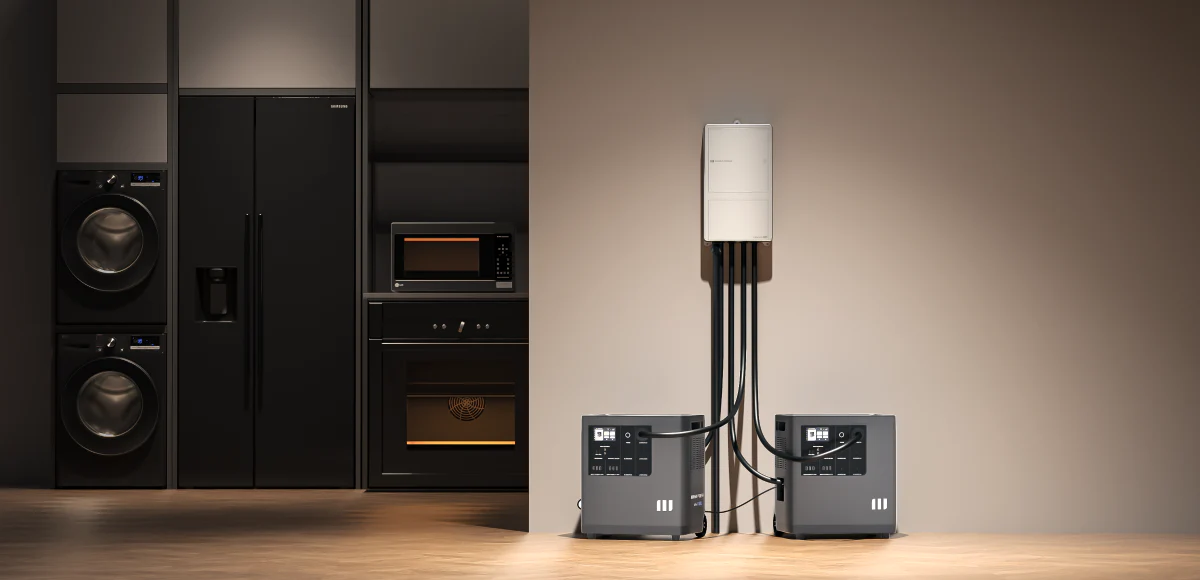
1. Smart Home Integration
Leveraging Technology
-
Smart Energy Management: Implement systems that automatically manage power distribution based on usage patterns, reducing waste and increasing efficiency.
-
Remote Monitoring: Use apps and home automation systems to monitor and control your power system from anywhere, ensuring you always know the status of your generators and solar panels.
Benefits
-
Enhanced Efficiency: Automatically adjust settings based on real-time data, like reducing generator power output during low-demand periods.
-
Increased Convenience: Manage your home’s power systems through voice commands or a smartphone interface.
2. Latest Technological Advancements
Innovations in Generator Technology
-
Inverter Generators: Discuss the benefits of inverter technology for portable generators, such as reduced noise and better fuel efficiency.
-
Battery Integration: Highlight hybrid systems that combine traditional generators with battery storage, smoothing out energy delivery and reducing fuel use during lower demand.
Renewable Energy Trends
-
Solar Panel Innovations: Explore newer, more efficient types of solar cells that offer higher outputs even on cloudy days.
-
Wind Energy: Briefly touch on small-scale wind turbines that can be used in residential settings for supplemental power.
3. Eco-Friendly Practices
Reducing Environmental Impact
-
Choosing Cleaner Fuels: Promote the use of propane or natural gas over gasoline for generators to minimize emissions.
-
Solar and Wind: Emphasize the zero-emission benefits of incorporating renewable energy sources into your home power plan.
Sustainable Maintenance Practices
-
Recycling Old Components: Provide information on how to responsibly dispose of or recycle old generator batteries and parts.
-
Using Biodegradable Oils and Fluids: Recommend environmentally friendly products for generator maintenance.
4. Preparing for the Future
Adaptability to New Technologies
-
Upgrade Paths: Explain how to plan your current setup so it can be easily upgraded with new technologies in the future.
-
Staying Informed: Encourage continuous learning about advancements in home energy solutions through trusted resources and expert consultations.
Long-Term Energy Planning
-
Assessing Future Energy Needs: Help homeowners project their future power needs based on trends like electric vehicle ownership or home expansion plans.
-
Investing in Scalability: Discuss the importance of choosing systems that can grow with your energy needs, such as modular solar panel setups or generators that can be linked together for increased output.
Conclusion: Maximizing Your Power System's Potential
Advancements in technology and a shift towards more sustainable practices provide a wealth of opportunities to enhance your home power systems. By embracing smart technology, staying abreast of the latest developments, and adopting eco-friendly practices, you can ensure that your power solutions are not only prepared for today’s needs but are also future-proofed for tomorrow’s challenges. This chapter has armed you with advanced tips and tricks to optimize efficiency, reduce environmental impact, and prepare for future energy trends, helping you get the most out of your investment.
Conclusion: Powering Your Home, Empowering Your Life
As we conclude this guide, it's important to reflect on the journey we've embarked on together—from understanding the basic needs of a home power system to exploring the complexities of advanced and sustainable energy solutions. This eBook has not only equipped you with the knowledge to choose the right types of generators and alternative energy options but has also inspired you to embrace smarter, greener technologies.
Key Takeaways:
-
Reliability and Preparedness: Standby and dual fuel generators from trusted brands like Cummins and Briggs and Stratton ensure that your home remains operational and safe during unexpected power outages.
-
Sustainability and Innovation: Integrating solar kits and other renewable resources like Bluetti and Ecoflow enhances your energy independence while reducing your environmental impact.
-
Smart Integration and Future Planning: Advanced technologies and smart home systems can optimize your energy usage and adapt to future needs, ensuring that your power solutions grow with your lifestyle changes.
Moving Forward:
Your next steps involve assessing your current home energy system, considering potential upgrades, and perhaps consulting with professionals to implement the solutions that best fit your needs. Remember, the choices you make today will not only impact the comfort and safety of your home but also contribute to a more sustainable and energy-efficient future.
Stay Empowered:
We encourage you to stay informed about new developments in home energy solutions and continuously seek ways to improve your setup. By doing so, you ensure that your home remains a haven of comfort and reliability, no matter what challenges lie ahead.
Thank You:
Thank you for choosing this guide to assist you in navigating the complex world of home power solutions. We hope you feel more confident and ready to make informed decisions that will enhance your home's energy resilience and sustainability.


Leave a comment